A Study of Cellular Diversity in Health and Disease Using Mass Cytometry and Computational Approaches
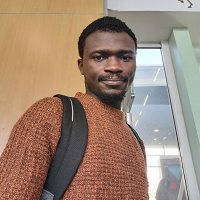 Student: Muizdeen Raji
Student: Muizdeen Raji
Supervisory team: Dr Joseph R Slupsky, Molecular and Clinical Cancer Medicine; Dr Vitaliy Kurlin, Computer Science and Materials Innovation Factory (MIF); and Dr Nagesh Kalakonda, Clatterbridge Cancer Centre
Clustering similar cells can help biologists detect cell subsets, and their differential abundance. These cell subsets can be especially important in clinics as they can be linked to certain clinical interpretations. Thus, these cell subsets can be used for predictions. In this research a range of clustering algorithms is being experimented with to best cluster Chronic Lymphocytic Leukemia (CLL) cells obtained from CLL patients using a relatively novel single cell high dimensional technique called Mass Cytometry. The idea is to use Expectation Maximisation, an iterative method for finding maximum likelihood estimates of parameters in statistical models, and which a literature review has shown not to have been used previously in the context of cell clustering. The vision is that this research will lead to supervised learning algorithms to classify previously unseen CLL data according to the generated cluster configuration using, for example, a nearest neighbour classification approach.
Machine Learning for The Next Generation of Paediatric Wheelchairs
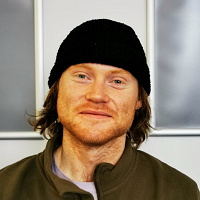 Student: Peter Wright
Student: Peter Wright
Supervisory team: Dr Paolo Paoletti, Engineering; Dr Shan Luo, Dept. Computer Science; Dr Farnaz Nickpour, Department of Civil Engineering and Industrial Design; and Mr Iain Hennessey, Clinical Director of Innovation at Alder Hey Children's Hospital
When it comes to assistive mobility devices, young people and children are often neglected. Most current wheelchair technology, and research, focuses on providing a service for disabled adults. This is for a number of reasons, such as the growth of children through their early years, and lack of data available for researchers. Whilst there is a growing sector for paediatric mobility, there are still many advances that can be made, often ergonomic considerations of the user are ignored. This project will focus on providing a new type of assistive mobility for young people. Utilising new advances in Machine Learning and Robot capabilities. The intention is to provide a platform for all young children who use wheelchairs, to have fair and equal opportunities compared to their peers. More specifically, the project aims to explore how sensing and machine learning can contribute to the creation of the next generation of paediatric powered wheelchairs.
The Application of Artificial Intelligence Systems to Develop Novel Diagnostic and Prognostic Tools for Hepatocellular Carcinoma
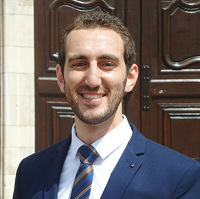 Student: Mohamed Elhalwagy
Student: Mohamed Elhalwagy
Supervisory team: Prof. Philip Johnson, Dept of Molecular and Clinical Cancer Medicine; Prof. Ahmed Elsheikh, Engineering; Dr Vinzent Rolny, Roche Diagnostics GmbH, Germany; and Dr Tim Cross, Consultant hepatologist, Royal Liverpool and Broadgreen University Hospital Trust (RLBUHT)
Hepatocellular Carcinoma (HCC), "liver cancer", is the second most frequent cause of cancer-related death worldwide, and the most rapidly increasing cause of cancer mortality in the West. Current potentially curative treatments tend to have little impact, because such treatments can only be effective if the cancer is detected early enough. The current solution is focused on routine screening, however, conventional screening approaches are not ideal for large-scale surveillance. An alternative approach is to conduct blood tests for early diagnosis. Initial studies indicate that this is a viable solution. A team at Liverpool has built and validated a model for HCC diagnosis, based on a large database of UK patients that combines three serum (blood-based) biomarkers for HCC. Initial work adopted conventional biostatistical methods to model the data. However, it is conjectured a much more sophisticated model can be constructed using the methods of AI. The aim of this project is therefore to develop an effective diagnosis and screening mechanism, founded on the tools and techniques of AI, directed at blood-based tests that can be adopted routinely; thus overcoming the limitations imposed by current screening programmes.
An Intelligent Imaging Technology for Automatic Characterisation of the Refractive Power of the Human Eye
 Student: Weiqiang Chen
Student: Weiqiang Chen
Supervisory team: Prof. Yaochun Shen, Electronics and Electrical Engineering (EEE); Dr Yalin Zheng, Department of Eye and Vision Science; and Prof Stephen Kaye, Royal Liverpool and Broadgreen University Hospital Trust (RLBUHT)
Optical Coherence Tomography (OCT) allows for the capture of high-resolution cross-sectional images. It is a crucial tool for the diagnosis and planning of surgery to address ocular diseases. OCT utilizes low coherence interferometry to acquire backscattered or backreflected light to obtain corneal images, with depths of up to a few millimetres, with micrometre-scale spatial resolution. In this project, a compact, low cost, real-time 3D-OCT system, without mechanical scanning components, is under investigation so as to generate corneal images with sufficient depth. Since the image quality and image capture speed of the envisioned low-cost system may not be as good, or as fast, as alternative (more expensive) current commercial OCT systems, existing image segmentation algorithms based on high quality images may not work well. Thus, new AI assisted image segmentation algorithms, 3D reconstruction algorithms and new signal processing approaches are required to improve the system performance and thus provide a comparatively low cost solution to ocular disease diagnosis and care.
Machine Learning of Epidemic Models
 Student: Yanhua Xu
Student: Yanhua Xu
Supervisory team: Dr Dominik Wojtczak, Computer Science; Prof Neil French, Institute of Infection and Global Health; and Dr Roberto Vivancos, Epidemiologist at Public Health England
Pneumococcus, or Streptococcus pneumoniae, is a bacterium responsible for Pneumococcal disease. The World Health Organization (WHO) estimates that Streptococcus pneumoniae kills close to half a million children under 5 years old yearly. Most of these deaths occur in developing countries, such as Africa. The most effective measure to prevent Pneumococcal disease is vaccination. Reliable models of how Pneumococcus spreads, and can be controlled, can help to reduce their impact and save lives. Typically models of the spread of infectious diseases are built manually, after which their parameters are adjusted to better fit the data. This is both time consuming and error-prone. However, it is also a challenging problem for general machine learning techniques because (typically) the data available is very limited. The aim of this project is to use Artificial Intelligence (AI) technology to show that providing known properties of the disease to be considered greatly helps in learning a suitable epidemic model automatically, and then to devise (find) a best strategy to control the disease. Two fundamental machine learning paradigms will be investigated: reinforcement learning and Hidden Markov Models.
An Intelligent Assistant for Medical Doctors when Prioritising Pathology Results
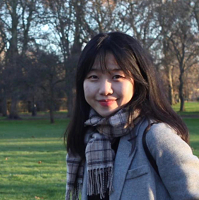 Student: Jing Qi
Student: Jing Qi
Supervisory team: Dr Shagufta Scanlon, Computer Science; Prof. Frans Coenen, Computer Science; Dr Girvan Burnside, Biostatistics; and Mr Paul Charnley, Wirral Teaching Hospital
In any hospital millions of computerised pathology results are produced every year. The resource required by doctors to check these results, so as to determine whether some action is required or simply to endorse the result, is substantial. The issue is compounded by additional issues such as spurious test results or uncertain risk level for potential diseases. Prioritising pathology results is thus a significant challenge. This PhD research project is directed at the utilisation of the tools and techniques of Machine Learning to help prioritise pathology results to save doctor time. More specifically the work is directed at using patterns extracted from pathology historical records to prioritise previously unseen pathology results. A particular challenge is that the data available is unlabelled; the machine learning must therefore be conducted in an unsupervised manner or using a proxy for a ground truth. One idea is to priortise through the identification of outliers, another is to identify patterns and trends in existing patient records that have led to changes in care and use these patterns and trends as a proxy mechanism.
Wearable sensing for non-invasive human pose estimation during sleep
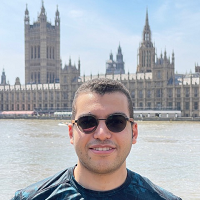 Student: Omar Elnaggar
Student: Omar Elnaggar
Supervisory team: Dr Paolo Paoletti, Engineering; Prof. Frans Coenen, Computer Science; and Dr Andrew Hopkinson, Hopkinson Research.
Sleep is a natural recovery mechanism through which the human body recuperates from daily activities. Recently, research studies found that sleep does not necessarily indicate signs of recovery, it can in fact bring about health complications or reveal underlying disorders. Since humans spend roughly one-third of their life either sleeping or attempting to do so, collaborating medical consultants are interested in investigating the impact of prolonged sleeping poses on musculoskeletal health and wellbeing. The answer to this question will enable clinicians to justify interventions preventing or reversing certain limb and joint pathologies. The idea is to collect data on sleep posture using wearable inertial and magnetic sensors. Unlike vision systems, wearable sensors have no privacy concerns, and extract accurate postural information of body segments. The project pushes forward the frontiers of sleeping pose tracking by developing: (i) novel wearable sensors suited for sleep, and (ii) smart algorithms to map the raw sensory signals to the underlying body pose.
Back to: Study